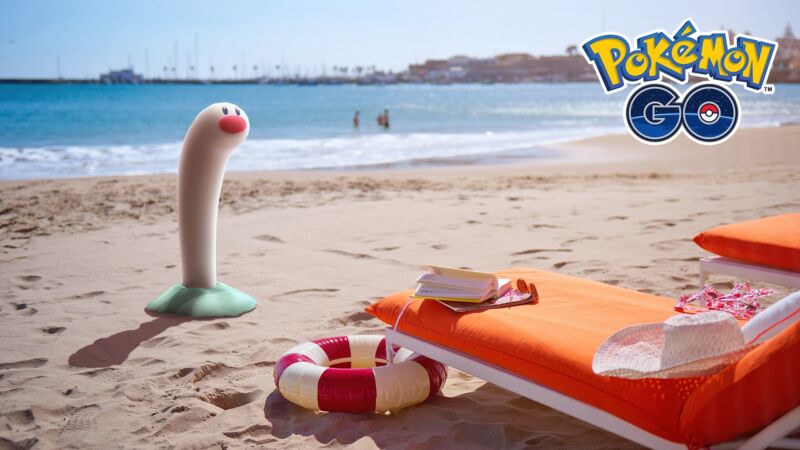
Niantic
Ah, Pokémon Go. The hottest mobile game of 2016 remains a potent force to this day, pulling in hundreds of millions of dollars a year from tens of millions of monthly active players.
Part of what keeps the game fresh is a continuous trickle of new Pokémon. The game began with just the original 151 monsters back in 2016 and has gradually caught up to the current generation of Switch games in bits and pieces over the last eight years. The game is currently in the process of adding monsters from Scarlet and Violet, and that’s where this story begins.
Two of the latest additions to the Pokémon Go roster are Wiglett and Wugtrio, riffs on the designs of Diglett and Dugtrio, who live on beaches and look kind of like garden eels. Pokémon Go uses a biome system that restricts certain Pokémon to certain types of real-world terrain, like forests, mountains, and beaches. As aquatic Pokémon, Wiglett and Wugtrio show up in the beach biome.
And that’s been a problem for landlocked players looking to catch these new Pokémon. According to a report from 404 Media, some of those players have been adding fake beaches to OpenStreetMap so they could have easier access to the beach biome in Pokémon Go (though the game Go initially used Google Maps data, it apparently switched to OpenStreetMap at some point in 2017). OpenStreetMap contributors have discovered “beaches” that were actually located in residential backyards, golf courses, and sports fields.
This is far from the first time that overenthusiastic Pokémon Go players have exasperated OpenStreetMap contributors. Entire blog posts, wiki entries, and presentations from OSM mappers exist to bridge the knowledge gap, explaining the purpose of OpenStreetMap data to Pokémon Go users and breaking down Pokémon Go game mechanics for frustrated OSM contributors. Among the things that OSM contributors try to make clear to Pokémon Go players: It’s unclear how often Niantic is pulling new map data from OSM, so your fake biomes may be messing up map data without even getting you the rare Pokémon you want.
As that OSM blog post implies, not every user who discovers the OpenStreetMap project via Pokémon Go ends up messing with the data. Though many users are “truth-stretching” vandals who create nonexistent parks, beaches, and footways to encourage specific Pokémon to spawn, others become “very careful, trustworthy” OSM users who “make many worthy additions to the map” by accurately mapping out places where OSM’s data is patchy or outdated.
